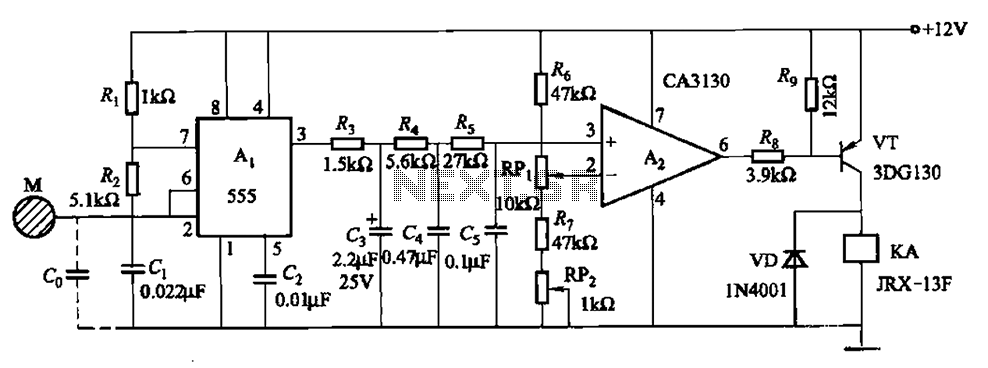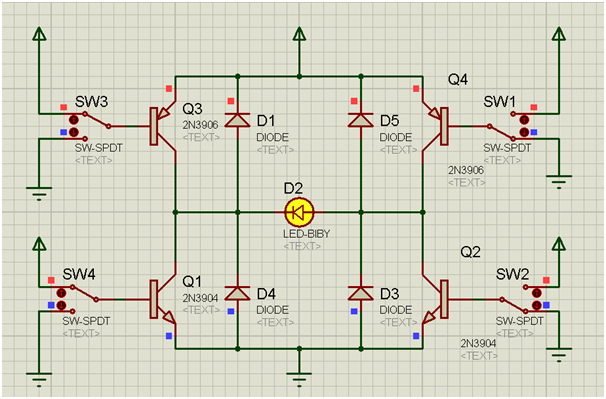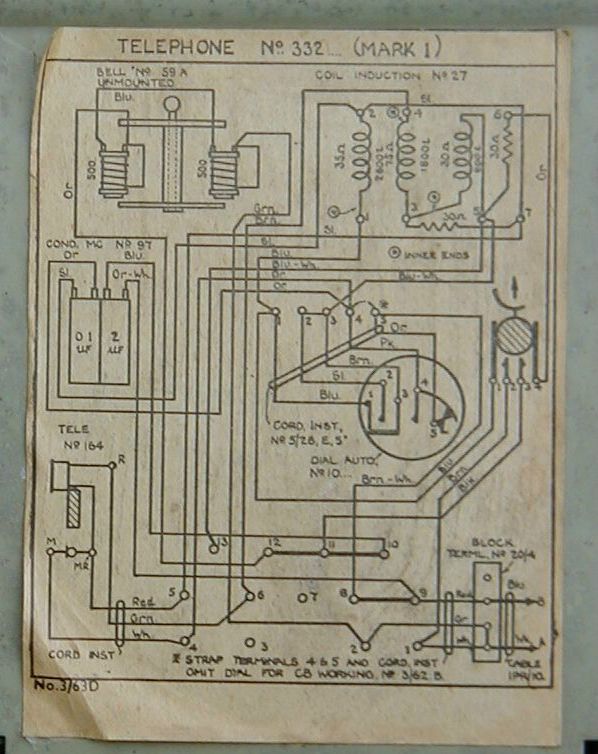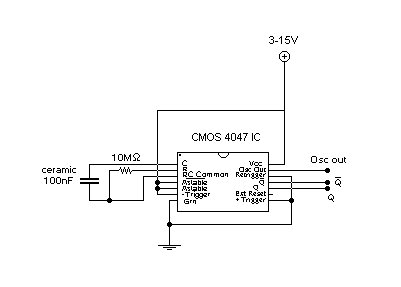
One of capacitive sensing oscillator circuit burglar alarm

The circuit utilizes a 555 IC in conjunction with capacitors C1, C2, and a metal plate (tablet) M to create a distributed capacitance Co and resistor R1 connected to ground. Resistor R2 forms a self-excited multivibrator, while resistors R3 and R5, along with capacitor C3, complete the circuit. Additionally, a three-order RC integration network is formed by capacitor C5. The CA3130 operational amplifier is configured with resistors R6, R7, RPi, and RP2 to function as a comparator. A transistor VT, along with resistors R8 and R9, is used to amplify the output. When a body approaches the metal plate M, the capacitance Co increases, resulting in a decrease in the multivibrator's oscillation frequency. This change causes the RC network to output a negative pulse, which turns on the transistor VT, activating relay KA to trigger an alarm signal. The sensitivity of the device can be adjusted using potentiometers RPi and RP2.
The circuit described operates as a proximity sensor using a combination of a 555 timer IC and an operational amplifier. The 555 timer is configured in a monostable mode, where it generates a pulse when a change in capacitance is detected. The metal plate serves as a sensing element; when an object approaches, the capacitance between the plate and ground increases. This change is reflected in the timing characteristics of the 555 timer, which is influenced by the RC time constant determined by the resistors and capacitors in the circuit.
The CA3130 operational amplifier is employed to compare the output of the RC network with a reference voltage, providing a means to detect the change in capacitance. The output of the operational amplifier drives the transistor VT, which acts as a switch to control the relay KA. When the relay is activated, it can be used to trigger an external alarm system or indicator.
The adjustable potentiometers RPi and RP2 allow for fine-tuning of the sensitivity of the sensor, enabling the user to set the threshold at which the circuit will react to the presence of an object. This feature is particularly useful in applications where varying distances or object sizes need to be accounted for.
Overall, this circuit provides a robust solution for proximity detection, leveraging the properties of capacitors and the functionality of operational amplifiers and transistors to create a responsive and adjustable alarm system. By the 555 IC Ai, capacitors Cl, Cz and metal plate (tablet) M distributed capacitance Co and resistor Ri to ground, R2 consisting self-excited multivibrator; the R3-Rs and C3 ~ C5 composition three -order RC integration network; by the CA3130 operational amplifier Az, Re, R7 and RPi, RPz composition comparator; by the transistor VT and R8, R9 composition amplifier. When the body close to the metal plate M, Co capacitance increases, the multivibrator oscillation frequency decreases, RC network outputs a negative pulse, VT conduction, the relay KA pull, turn alarm, an alarm signal.
Adjustment potentiometer RPi, RP2, can change the sensitivity of the device.
The circuit described operates as a proximity sensor using a combination of a 555 timer IC and an operational amplifier. The 555 timer is configured in a monostable mode, where it generates a pulse when a change in capacitance is detected. The metal plate serves as a sensing element; when an object approaches, the capacitance between the plate and ground increases. This change is reflected in the timing characteristics of the 555 timer, which is influenced by the RC time constant determined by the resistors and capacitors in the circuit.
The CA3130 operational amplifier is employed to compare the output of the RC network with a reference voltage, providing a means to detect the change in capacitance. The output of the operational amplifier drives the transistor VT, which acts as a switch to control the relay KA. When the relay is activated, it can be used to trigger an external alarm system or indicator.
The adjustable potentiometers RPi and RP2 allow for fine-tuning of the sensitivity of the sensor, enabling the user to set the threshold at which the circuit will react to the presence of an object. This feature is particularly useful in applications where varying distances or object sizes need to be accounted for.
Overall, this circuit provides a robust solution for proximity detection, leveraging the properties of capacitors and the functionality of operational amplifiers and transistors to create a responsive and adjustable alarm system. By the 555 IC Ai, capacitors Cl, Cz and metal plate (tablet) M distributed capacitance Co and resistor Ri to ground, R2 consisting self-excited multivibrator; the R3-Rs and C3 ~ C5 composition three -order RC integration network; by the CA3130 operational amplifier Az, Re, R7 and RPi, RPz composition comparator; by the transistor VT and R8, R9 composition amplifier. When the body close to the metal plate M, Co capacitance increases, the multivibrator oscillation frequency decreases, RC network outputs a negative pulse, VT conduction, the relay KA pull, turn alarm, an alarm signal.
Adjustment potentiometer RPi, RP2, can change the sensitivity of the device.





